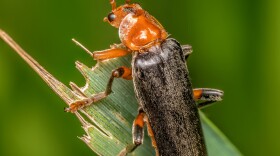Fetid.
Foul-smelling.
Funky.
Stanky.
Sometimes feet just stink.
But if you’re a bumblebee, that’s actually a good thing.
Bumblebees are important pollinators of native wildflowers and a number of crops, such as peppers, tomatoes, blueberries, squash and melons. If fact, they are much more effective at pollination and pollen collection than honey bees. That’s because they employ a technique known as “buzz” pollination.
Instead of entering a flower to gather pollen, bumblebees grasp the flower with their legs or mouthparts and vibrate their flight muscles creating their familiar “buzz” sound. These vibrations cause the pollen to be shaken out of the flower and onto the bee for collection. Sort of like shaking an apple tree to drop the apples rather than collecting them individually — a more active collection method that’s highly effective.
So, what’s this got to do with bumblebees having smelly feet? When visiting a flower, bumbles leave behind an imprint of their foot funk. To other bees, it’s so strong that it can still be detected up to 24 hours after the poor flower was defiled.
Researchers at the University of Bristol report that thanks to this leftover stink, bumblebees can determine if they, a nest mate, or an entirely unknown bumblebee recently visited a particular flower. Being able to decipher these leftover odors is thought to prevent the bees from making redundant visits to the same flower — thereby further increasing their efficiency as pollinators.
So, the next time you see a bumblebee tending to a flower, watch and listen closely for its unique buzz pollination technique. And be thankful that you are not able to smell their tiny, but stinky feet.





